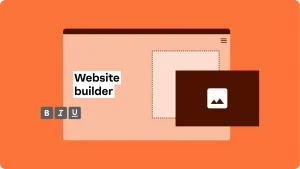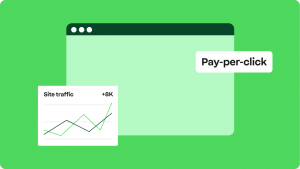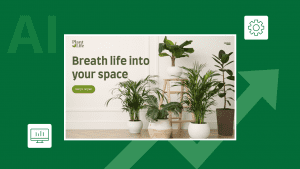Key takeaways:
- Combining digital marketing (SEO, PPC, social media) with traditional methods (direct mail, sponsorships) generates steady, year-round leads.
- Optimizing your Google Business Profile and online reviews is the fastest way to improve local visibility to homeowners looking for roofing services.
- Tracking key metrics like cost per lead and conversion rate refines your strategy and maximizes marketing ROI.
The roofing industry is very competitive, and standing out requires more than word of mouth. In fact, 76% of users looking up local businesses visit them within the day. This means if your roofing company isn’t showing up, chances are other roofing companies are getting clients instead. Effective advertising for roofing combines modern digital strategies with tried-and-true local marketing.
Today’s most successful roofing contractors blend digital channels like search engine optimization (SEO), PPC advertising, and social media marketing with traditional options such as direct mail and community sponsorships to build steady leads and brand awareness.
Here, we’ll run down the most effective digital marketing tools, the steps to incorporate them, and some advanced tips to help modernize your roofing business advertising strategy.

Roofing digital advertising strategies you can try
Think of this as your modern roofing marketing strategy, a blend of digital strategies that attract leads, build trust, and boost visibility.
- Local SEO and Google Business Profile optimization
- Google search ads (PPC) and local services ads
- Social media advertising for roofers
Local SEO and Google Business Profile optimization
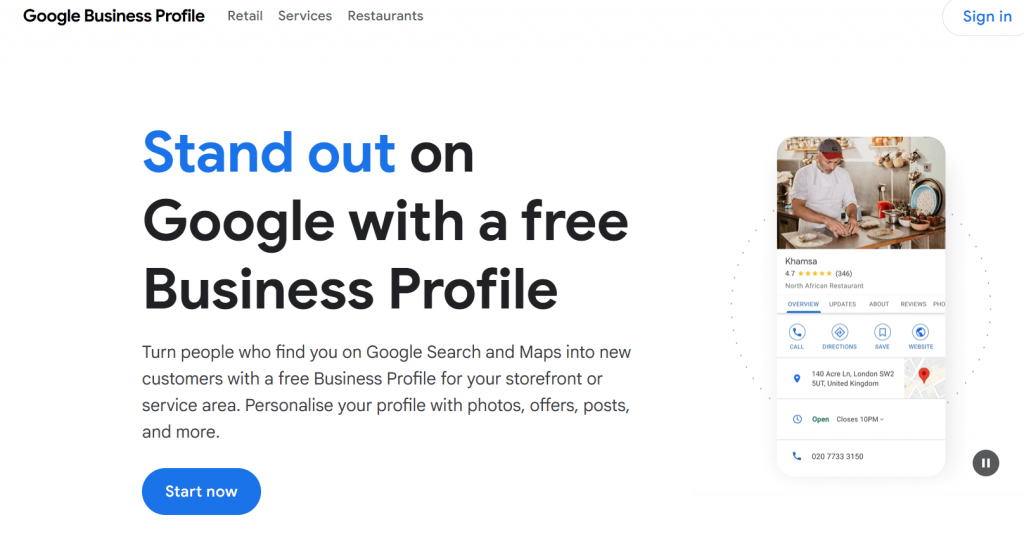
Most roofing customers start with a simple search like “roof repair near me.” Appearing in Google’s Map Pack can capture these high-intent leads right away.
Steps to optimize:
- Claim and verify your Google Business Profile (GBP).
- Add accurate service details, coverage areas, and business hours.
- Upload before-and-after photos of your projects.
- Encourage satisfied customers to leave Google reviews.
Google Search Ads and Local Services Ads
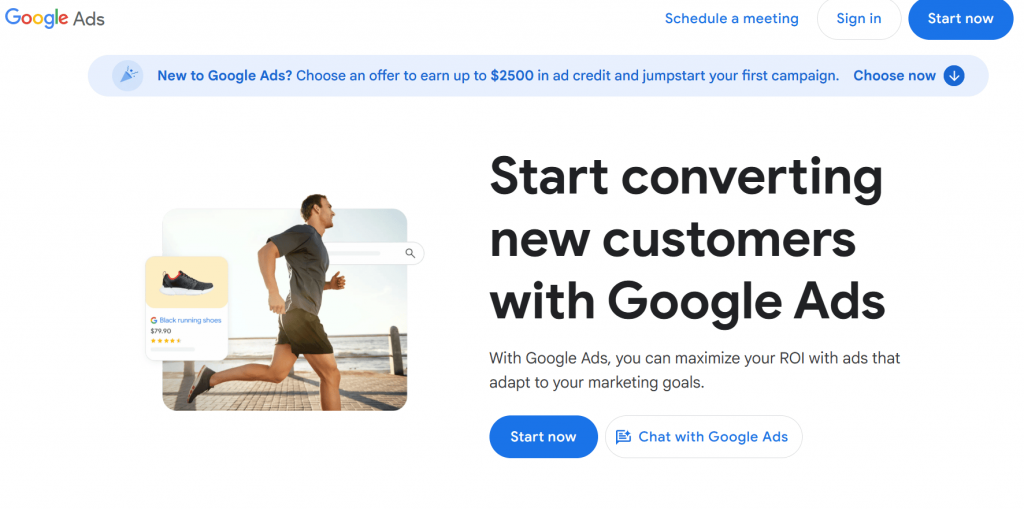
Google Search Ads and Local Services Ads are among the most effective ways for roofing companies to reach homeowners who are actively searching for help. These tools place your business in front of people who already intend to buy, which makes every click more valuable.
How Google Search Ads work
Google Search Ads, often called Pay Per Click (PPC) ads, appear at the very top of search results when someone types in a keyword such as “roof repair near me” or “storm damage roof replacement.” You choose the keywords you want your ad to appear for, and you pay a small fee each time someone clicks on your ad.
Your ad can include a short description, phone number, and location, leading users directly to your website or a dedicated landing page. Because these ads are shown only to people who are already searching for your service, they produce highly targeted leads who are ready to take action.
The main benefits of Google Search Ads include:
- Immediate visibility in your local market, even before your website ranks organically.
- Control over budget and targeting so you can focus on specific service areas or keywords.
- Trackable performance metrics, allowing you to see how many leads or calls each campaign generates.
How Local Services Ads (LSA) help build trust
Local Services Ads are another advertising option that appears above the traditional Google Ads listings. These ads are designed specifically for service-based businesses like roofing, plumbing, and HVAC.
They display your business name, average review rating, phone number, and “Google Guaranteed” badge, which signals to customers that Google has verified your business license and background checks. This badge builds strong credibility because it shows that your company is trustworthy and vetted.
Customers can contact you directly through the ad, and you pay only when someone actually reaches out, not for every click. For many roofers, LSAs deliver some of the highest-quality leads because they combine strong visibility with social proof.
Understanding the sample budget table
The numbers in the table below are industry estimates based on average costs reported by marketing agencies that manage roofing campaigns through Google Ads and LSA platforms. Google itself does not publish fixed prices, since costs vary depending on your location, competition, and time of year.
The estimates below give you a general idea of what you might expect to spend and the kind of lead volume you could see:
| Budget | Estimated clicks | Average cost per lead (CPL) | Suggested use |
| $1,000 | 200 | $40 | Small town, limited competition |
| $3,000 | 400 | $25 | Medium metro area |
| $5,000+ | 600 | $18 | Multi-city storm coverage or large service area |
These estimates assume a mix of well-optimized campaigns that use targeted keywords, strong ad copy, and relevant landing pages. In real campaigns, actual costs may shift higher or lower depending on factors such as seasonality, click-through rate, and competition from other local roofers.
Why these ads are so effective
Homeowners rarely scroll past the first few search results when looking for emergency repairs or storm-related roof issues. Appearing at the top of Google searches ensures your business is visible right when customers are ready to call.
Roofing companies that invest in PPC and LSA advertising often see faster results compared to SEO alone. Combining these paid strategies with a strong organic presence helps you cover both short-term lead generation and long-term brand growth.
Social media advertising for roofers
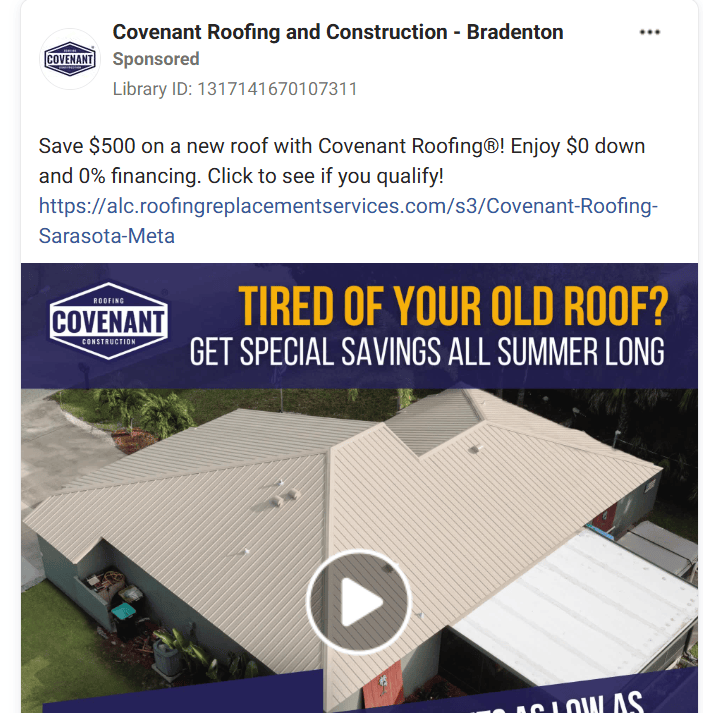
Platforms like Facebook, Instagram, and Nextdoor can deliver strong local awareness and affordable leads. Social media advertising helps roofing companies reach local homeowners, showcase real roofing projects, and build trust online. Social media offers affordable ways for roofing contractors to promote their roofing services and generate consistent leads.
Common ad types include:
- Before-and-after project carousels
- Free roof inspection” limited-time offers
- Short testimonial or walkthrough videos
Pro tip: When choosing the best platform for roofing advertising, Facebook and Instagram are ideal for local visibility and lead capture, while Nextdoor helps build neighborhood credibility.
Traditional advertising ideas that still work for roofers
Offline strategies can still have a significant impact, especially when combined with digital campaigns.
- Direct mail and neighborhood campaigns
- Vehicle wraps, yard signs, and local sponsorships
- Referral programs and community involvement
Direct mail and neighborhood campaigns
Snail mail is often effective after local storms or seasonal shifts. These are times when roofing concerns are top of mind. It’ a smart way to reach homeowners who haven’t started searching online yet.
Many people at this stage haven’t yet begun searching online, which makes direct mail a great way to reach them first and establish your business as the go-to local expert.
How direct mail complements email marketing
When combined with email campaigns, direct mail becomes even more powerful.
A homeowner might receive a postcard offering a free inspection, scan the QR code that leads to your website, and then later receive a follow-up email reinforcing that offer or sharing customer testimonials. This creates a multi-touch marketing experience that keeps your roofing business top of mind and builds familiarity and trust.
Email is great for nurturing leads over time offering maintenance tips, seasonal reminders, and special promotions while direct mail creates a tangible first impression that grabs attention in a way a digital ad can’t. Together, they boost recall and increase conversion rates because they reach customers across both physical and digital channels.
Tips for effective direct mail
To make your mailers stand out and drive responses:
- Include QR codes that link directly to your website or booking page.
- Feature “Free Inspection” or “Limited-Time Discount” offers to create urgency.
- Use before-and-after project photos to show real results.
- Keep your design clean, professional, and clearly branded.
- Emphasize your local service area; homeowners trust nearby contractors who understand local conditions.
By pairing well-timed direct mail with consistent email follow-ups, roofing companies can create a reliable flow of qualified leads, especially in neighborhoods recently affected by weather events or where past projects have built local visibility.
Pro tip: Keep designs clean and professional and use before/after visuals to show your work quality.
Vehicle wraps, yard signs, and local sponsorships
Your trucks and job sites can be moving billboards. Consistent branding (logos, colors, slogans) reinforces recognition. Your branded trucks and job-site signs also serve as effective traditional marketing tools. Consistent design builds recognition and trust among local businesses and residents.
Example slogan: “Secure Your Roof. Secure Your Home.”
Use this consistently on every sign and ad.
Consider sponsoring local sports teams or school events to build name familiarity and goodwill.
Referral programs and community involvement
Offer small incentives for referrals, like gift cards or service discounts. Homeowners trust local recommendations more than paid ads. Offer small rewards for referrals and get involved in neighborhood events to build strong community connections.
Get involved in community fairs or festivals, and people remember roofers who show up for their town.
How to build an effective roofing advertising plan
A clear advertising plan keeps your roofing marketing strategy focused and effective.
Follow this simple step-by-step approach to bring your advertising efforts to another level:
- Define your target market
- Choose your platforms
- Set a realistic budget
- Track and optimize results
Step 1. Define your target market
Before spending a dollar on advertising, you need to know exactly who you serve.
Are your customers primarily homeowners needing roof repairs, commercial property managers, or storm damage clients filing insurance claims? Each audience has different needs, priorities, and search behaviors.
When you narrow your target audience, your messaging becomes more relevant and persuasive. For example, a homeowner cares about curb appeal and warranty protection, while a property manager values long-term maintenance contracts and cost efficiency.
By tailoring your ads, landing pages, and visuals to match these motivations, you’ll attract higher-quality leads who are more likely to convert and waste less money on audiences who aren’t a fit.
Step 2: Choose your channels
Once you know your audience, decide where to reach them. A balanced mix of digital and traditional advertising keeps your brand visible across multiple touchpoints:
- Digital marketing. Use Google Ads, Local Services Ads, Facebook, Nextdoor, and email campaigns to reach people who are actively searching or recently expressed interest in home services. SEO and PPC ensure your business appears when customers need you most.
- Traditional marketing. Reinforce your digital presence with direct mail, vehicle wraps, door hangers, and yard signs. These build recognition in your local community — especially in neighborhoods where you’ve recently completed work.
The most successful roofing companies integrate both. For instance, a Facebook ad might generate awareness, while a direct mailer in the same zip code reinforces your credibility. Combining SEO, PPC, and community engagement creates a strong marketing “ecosystem” that drives consistent leads year-round.
Step 3: Set a realistic budget
Advertising is an investment and roofing leads can range from $20 to $80 each, depending on your location and competition. A clear budget ensures you spend efficiently while testing what delivers results.
Sample allocation:
- 50% → Pay-per-click (PPC) and Google search ads for high-intent
- 30% → Social media campaigns to build awareness and trust leads
- 20% → Local and community marketing like sponsorships, signage, or door-to-door flyers
Start with smaller test budgets for each channel, then analyze performance before scaling. This approach reduces waste and helps you double down on strategies that deliver the best ROI.
Step 4: Track and optimize results
The most effective roofing advertisers measure everything. You can’t improve what you don’t track.
Monitor metrics such as:
- Cost per lead (CPL). How much it costs to generate one lead
- Conversion rate. The percentage of leads that become paying customers
- Return on ad spend (ROAS). How much revenue you earn from each dollar spent
Use tools like call tracking, Google Analytics, and UTM tags to see which campaigns drive the best results. Over time, this data helps you refine your ads, adjust your budget, and continuously improve performance.
Roofing companies that track and optimize regularly often see their lead costs drop by 25–40% over time simply by eliminating underperforming campaigns and focusing on what works.
Building trust through reviews, visuals, and website quality
Trust builds credibility, and credibility drives sales. Encourage satisfied customers to leave Google and Facebook reviews, showcase before-and-after photos of completed roofing projects, and share short testimonial videos on your website and social channels. Even simple steps like securing your website (HTTPS) and displaying certification badges help signal professionalism.
Trust is one of the most powerful drivers of roofing sales. Homeowners are making a major investment, so they need confidence that your company is reliable and experienced. Every element of your digital presence, from design to customer proof, should reinforce that trust.
Real-world example:
A local roofing company in Texas saw a 34% increase in conversion rates after adding a “Customer Reviews” page and posting video testimonials from satisfied homeowners. Another contractor in Florida doubled conversion rates by including verified project photos and Google review badges on their homepage. These additions gave potential customers the reassurance they needed to book inspections and sign contracts faster.
Advanced roofing advertising tips
Ready to go beyond the basics? These advanced tactics help roofing companies improve efficiency, capture more leads, and protect their reputation as they scale.
- Automate follow-ups and nurture leads
- Use a customer relationship management (CRM) system
- Leverage AI tools for efficiency
- Avoid compliance and policy mistakes
Automate follow-ups and nurture leads
Respond to leads within five minutes, as this “speed-to-lead” rule can double conversions.
Use a customer relationship management (CRM) system
Use a customer relationship management (CRM) system to send automated text messages or emails when someone fills out a form or calls your business. A simple “Thanks for reaching out! We’ll contact you shortly” can keep the homeowner engaged while your team prepares a detailed response. Automation also helps you schedule follow-ups for estimates, post-service reviews, and referral requests.
Leverage AI tools for efficiency
Artificial intelligence can help roofing contractors work smarter without adding extra staff. Tools like AI ad generators, automated image editors, and writing assistants can speed up content creation, improve ad targeting, and maintain platform consistency.
For example, AI can suggest ad headlines, build landing pages, or optimize your PPC campaigns for the best cost per click. With Network Solutions AI Website Builder and integrated marketing tools, roofers can quickly produce professional websites, update service pages, and publish helpful blog content that ranks well on Google.
Avoid compliance and policy mistakes
Roofing advertising is subject to specific truth-in-advertising rules. Avoid using photos that exaggerate damage or making claims from your roofing projects, such as “insurance guaranteed.” Always include your license number where required and use real project photos when possible.
Adhering to local and platform policies prevents account suspensions and builds trust with homeowners. Clear, honest communication strengthens your reputation and creates long-term ROI by turning satisfied customers into brand advocates.
Frequently asked questions
The most effective platforms are Google Local Services Ads and Facebook Lead Ads. They let roofing companies target local homeowners who are actively looking for services, making them highly cost-efficient. These platforms also build trust through reviews and quick lead responses, helping you convert more qualified leads.
By leveraging both digital and traditional advertising channels. Use Google, social media, and SEO to reach customers online, and pair them with local ads like flyers, yard signs, or radio. Define your target audience, create valuable offers, and track your leads consistently.
Most roofing businesses spend between $1,500–$5,000 monthly, scaling higher after storms or during busy seasons.
Use professional visuals, reviews, SSL security, and an AI builder for a polished, high-performing design. Use strong visuals, customer testimonials, secure hosting, high-performing design, and search engine optimization to improve rankings and trust.


